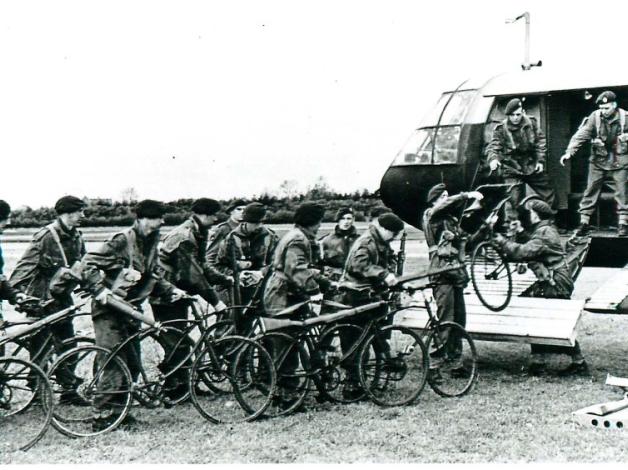RAF Barkston Heath
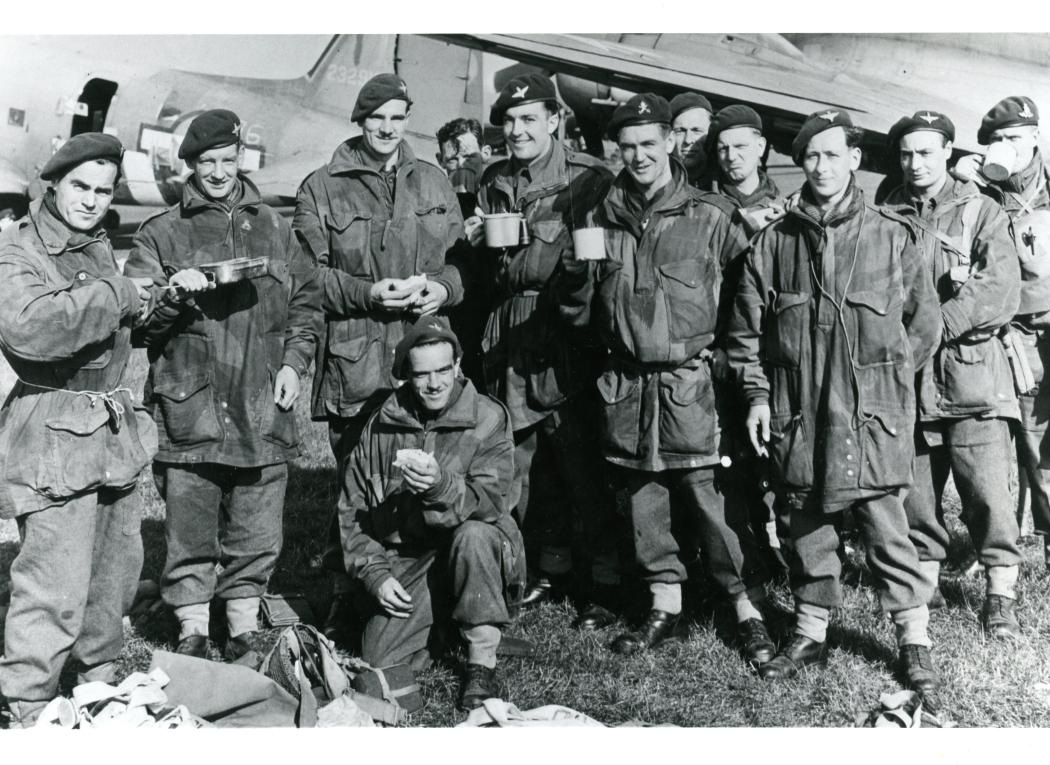
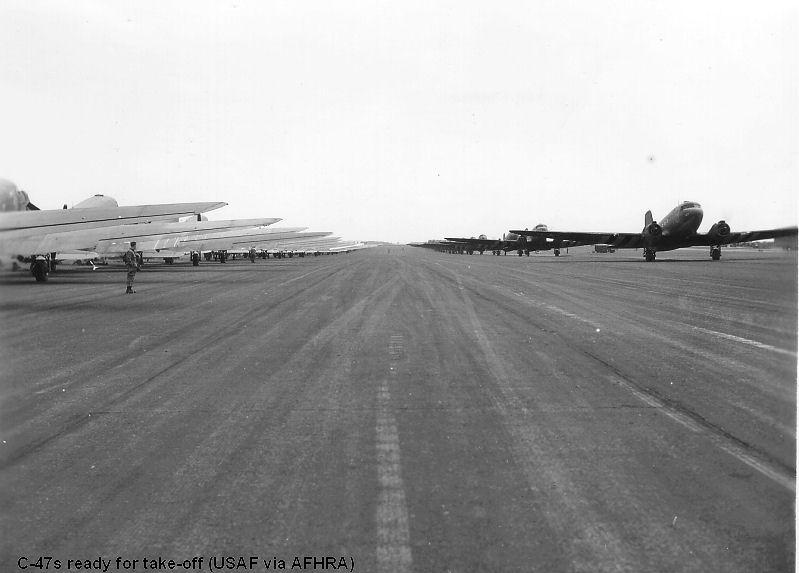
C-47s of the 61st Troop Carrier Group on a runway at Barkston Heath. (United States Army Air Forces, Public domain, via Wikimedia Commons)
RAF Barkston Heath is the last wartime airfield used by US Troop Carrier aircraft in the East Midlands that is still operated by the British military. The US IX Troop Carrier Command's 61st Troop Carrier Group (TCG) started to arrive from the Sicily campaign in February 1944. In June, US paratroopers flew to Normandy on D-Day and the 61st TCG was awarded a Distinguished Unit Citation for its actions. British and US troops flew to the Netherlands on Operation MARKET GARDEN in September.

Aerial photograph of Barkston Heath airfield taken on a training sortie by the US 7th Photographic Reconnaissance Group, 18 April 1944. (United States Army Air Forces, Public domain, via Wikimedia Commons)
RAF Barkston Heath began as a relief landing ground with grass runways for aircraft from RAF Cranwell. It was upgraded to a Class A bomber airfield standard, with concrete runways, in 1943. Originally intended as an operational training station for RAF heavy bombers, it was allocated to the US Ninth Air Force and earmarked for use by troop carrier units re-deploying to the UK from the Mediterranean theatre in preparation for D-Day.
The 61st TCG started to arrive from Sicily in February 1944, with C-47 transport aircraft. The C-47s were joined by Horsa and CG-4A gliders. To allow for undercover construction of CG-4A gliders arriving in crates, four additional hangars were built on the eastern side of the B6403 road.
The 61st TCG carried paratroopers of the 82nd Airborne Division and supplies to Normandy during Operation NEPTUNE (the airborne and seaborne assault on D-Day, 6 June 1944). The first mission consisted of two waves of 36 aircraft, each complete wave taking off within a staggering 90 seconds! The Group was awarded a Distinguished Unit Citation for its accomplishments.
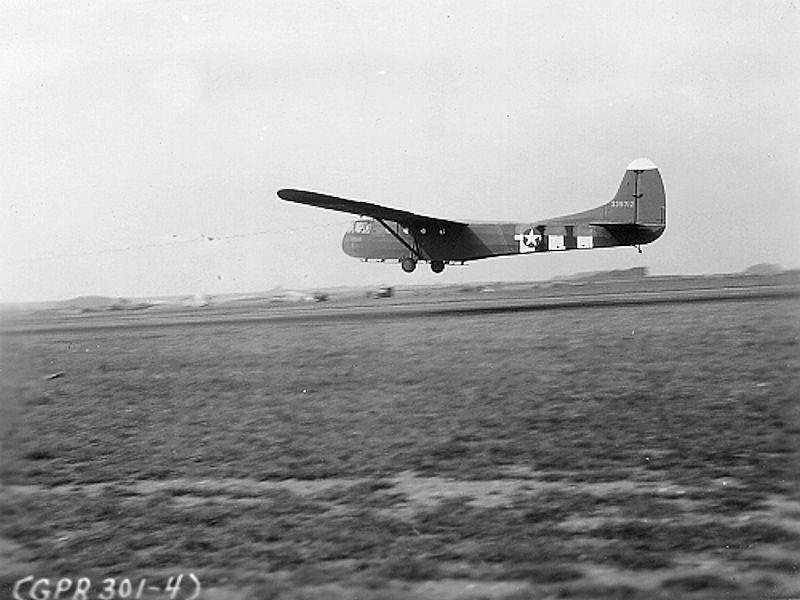
A CG-4A glider of the US 61st Troop Carrier Group lifts off from Barkston Heath airfield. (US Army Air Forces, Public domain, via Wikimedia Commons)
On 17 September 1944, the first day of Operation MARKET GARDEN, 71 aircraft of the 61st TCG dropped over 1100 paratroopers of the British 1st Airborne Division at Arnhem. On 18 September, the Group towed 80 CG-4A gliders to Nijmegen with troops of the US 82nd Airborne Division on board. On 19 September, flying from Aldermaston in the south, the Group dropped supplies in the Nijmegen area, and on 23 September, it towed 43 CG-4As to the Nijmegen area.
The 61st TCG left Barkston Heath in March 1945 and the 349th TCG arrived in the same month with its C-46 aircraft. After three weeks, they left for France, but a detachment of their aircraft returned to Barkston Heath and Saltby airfields in May 1945 to airlift troops of the British 1st Airborne Division to Norway as part of Operation DOOMSDAY, where they oversaw the surrender of German troops.
RAF Barkston Heath has remained a military airfield since the end of the war and continues as it started - as a part of nearby RAF Cranwell’s flying training schools.
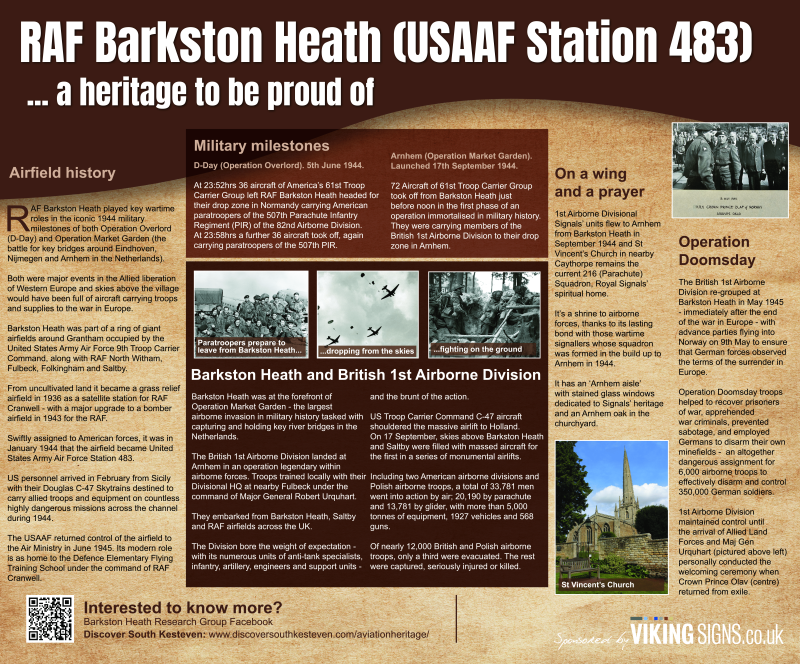
In July 2023, an information board provided by South Kesteven District Council was unveiled in the porch of St Nicholas' Church in Barkston village. It describes the World War II history of RAF Barkston Heath and the Airborne connections in the local area.
In the village of Barkston, an information board was unveiled in the porch of St Nicholas Church in 2023. It tells the story of the airfield's wartime history and the Airborne forces based in the local area.
At RAF Barkston Heath, a 2.5 tonne memorial - crafted from local Ancaster stone - commemorates the British and American Airborne forces that were based at or flew from the station during World War II. NOTE: RAF Barkston Heath is an active RAF airfield with no public access.

On the Doorstep
Grantham is the closest town and has an Airborne heritage exhibition in Grantham Museum. As the birthplace of Baroness Margaret Thatcher, the bustling market town has a statue of her on St Peter's Green, and another of world-famous scientist Sir Isaac Newton, who was born in Woolsthorpe Manor near Colsterworth. The Angel and Royal Hotel, which has hosted no less than seven Kings and Queens, was used as billets by US officers based at Headquarters, US IX Troop Carrier Command, in St Vincent’s Hall. Lincoln lies to the north with its renowned International Bomber Command Centre.
Access
RAF Barkston Heath is not accessible to the public as it is still an operational airfield. An old wartime T2 hangar, still in use, can be seen from the small back road that runs down the side of the airfield from the A607 towards Belton
